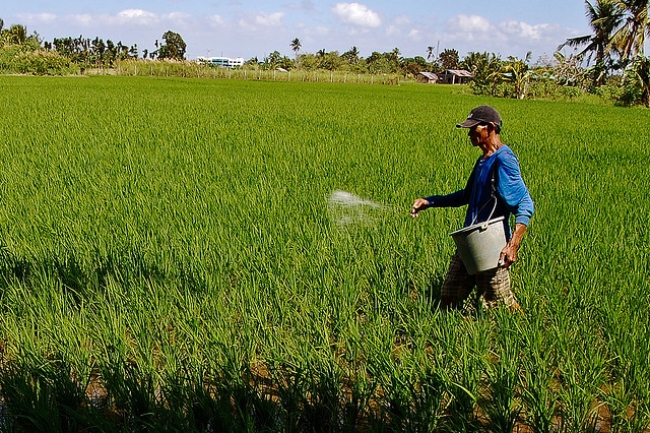
The nutrients a rice plant requires for growth and sustenance come mainly from soil, crop residues and irrigation water. However, these naturally occurring, indigenous nutrients are typically insufficient to meet the needs of rice grown for high yield, which must receive additional nutrients to fill the deficit.
Site-specific nutrient management (SSNM) provides farmers with an effective approach for “feeding” these supplements to rice. Nitrogen (N), phosphorus (P) and potassium (K) are the nutrients rice requires in the largest quantities. The SSNM approach enables farmers to apply these nutrients optimally, as and when the crop needs them. It does not specifically aim to either reduce or increase fertilizer use. Rather, applying supplemental nutrients at optimal rates and times achieves maximum use of the nutrients by the rice, and so maximizes the cash value of the harvest per unit of fertilizer
invested.

Because the supply of N from soil and organic sources is seldom sufficient for high yield, supplemental N is typically essential for higher profit from irrigated rice fields. For the best effect, farmers should apply N in several doses to ensure that the supply of N matches the crop need at critical growth stages. Effective and profi table N use requires the supply of N to be sufficient to meet crop needs at early and mid-tillering (branching) stages to maximize the number of panicles (grain bunches), at panicle initiation stage to increase spikelet (flower) number per panicle, and during the ripening phase to enhance grain filling.
SSNM provides two approaches for improved N management using a leaf color chart (see Chart Hit for N Sync). In the “real-time” approach, farmers monitor the rice leaves and apply N fertilizer whenever they become more yellowish green than the critical value indicated on the chart. In the “fixed-time/adjustable dose” approach, the time for N fertilization is pre-set at a critical growth stage, and farmers adjust the dose of N up or down based on leaf color.
Rice yields and the effectiveness of N use are often comparable for the two approaches. The fixed-time/adjustable-dose approach saves time and so is preferred by farmers who have gainful alternative activities, as often is the case in China and southern Vietnam. The real-time approach is generally preferred when farmers lack sufficient understanding of the critical stages for optimal timing of N fertilizer. In Bangladesh, net return with real-time N management, compared to that of farmers’ practice, was on average US$41-65/ha better per season across five seasons.
This approach is being promoted through the planned distribution of about 60,000 leaf color charts to Bangladeshi farmers in 2004.
Experiences from on-farm evaluation of SSNM across Asia indicate that many farmers of irrigated rice apply excess N during early crop growth, when crop demand for N is small, and then insufficient N at later growth stages such as panicle initiation, when crop demand for N is large. In addition, some rice farmers do not supply sufficient K fertilizer. Excess early N and insufficient K fertilizer can worsen the susceptibility of rice to diseases and insect pests. More and more, improved management of N and K fertilizer through SSNM is now reducing disease and insect damage in Asia, thereby reducing the need for pesticide.
_____________________________________________
Dr. Buresh is a senior soil scientist in IRRI’s Crop, Soil and Water Sciences Division and the institute’s program leader for favorable environments.





